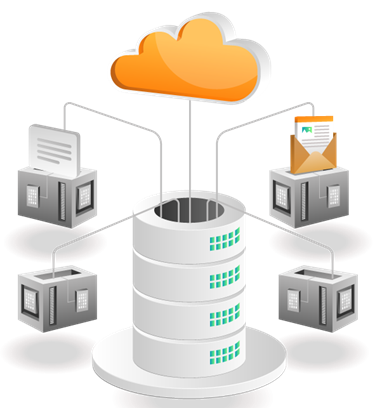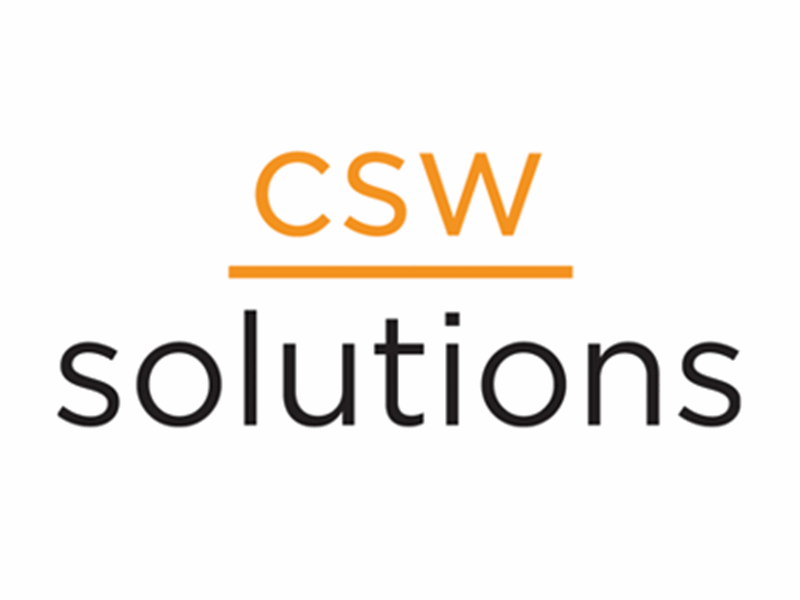Cloud migration and managed services are the best way to improve your business and operations. Read on to learn more about what CSW Solutions can do for you as your managed services partner.
How Azure Revolutionizes Cloud Security
In today's digital era, where data breaches and cyber threats are constantly on the rise, ensuring robust cloud security has become imperative for businesses of all sizes. Recognizing this pressing need, Microsoft Azure, a leading cloud computing platform, has revolutionized the way organizations approach and implement their security measures. With its comprehensive array of advanced features and cutting-edge technologies, Azure has not only strengthened the security of cloud infrastructures but also empowered businesses to confidently embrace the advantages of the cloud. In this article, we will explore how Microsoft is transforming cloud security with Azure and other innovative solutions, along with all the reasons why businesses need to consider it as their go-to solution for protecting their valuable assets and future intel.


Azure Sentinel
Azure Sentinel is a cloud-native security information and event management (SIEM) solution provided by Microsoft. It helps organizations to collect, analyze, and respond to security events and incidents in real-time across your entire enterprise. Azure Sentinel is built on Azure Log Analytics, which means it can ingest vast amounts of security data from various sources such as firewalls, endpoints, and cloud resources. This enables it to provide valuable insights and automate security operations. Azure Sentinel integrates with other Microsoft security solutions, such as Microsoft Defender for Endpoint and Microsoft Cloud App Security. This integration allows organizations to have a unified view of their security data and streamline their security operations.
One of the key capabilities of Azure Sentinel is its advanced security analytics. It uses machine learning algorithms and AI-powered analytics to detect and identify potential threats and anomalies in the data. This includes the ability to detect suspicious user behavior, identify malware and phishing attempts, and detect signs of data exfiltration or unauthorized access. This allows organizations to have a comprehensive view of their security posture and identify potential threats more effectively.
Azure Sentinel also includes built-in threat intelligence, which provides organizations with up-to-date information about known threats and vulnerabilities. This helps security teams to prioritize their response and take proactive measures to protect their environment.It can detect known threats based on the latest threat intelligence and also identify previously unknown threats using behavioral analytics. This proactive approach helps organizations stay one step ahead of cyber attackers.
Another important aspect of Azure Sentinel's security analytics capabilities is its automation and orchestration features. It allows security teams to automate routine tasks and workflows, such as investigating alerts, enriching data with contextual information, and responding to incidents. This helps to streamline security operations and improve the efficiency of the response process. By automating these processes, organizations can reduce the time and effort required to respond to security incidents, enabling them to remediate threats more quickly and efficiently. It also provides integration with other Microsoft security products and third-party solutions, allowing organizations to leverage their existing investments in security tools.
Microsoft Defender for Cloud
Microsoft Defender for Cloud is an all-inclusive cloud security solution that combines Cloud Security Posture Management (CSPM) and Cloud Workload Protection Platform (CWPP) capabilities. It is designed to help organizations protect their cloud environments, ensuring the security and compliance of their cloud resources.
Cloud Security Posture Management (CSPM) - CSPM is focused on assessing and managing the security posture of an organization's cloud infrastructure and services. It provides visibility into the security configuration of cloud resources, identifying misconfigurations and vulnerabilities that could expose the organization to potential risks. Microsoft Defender for Cloud offers continuous monitoring and assessment of cloud resources, providing recommendations for remediation and helping organizations maintain a strong security posture.
Cloud Workload Protection Platform (CWPP) - CWPP, on the other hand, focuses on protecting workloads and applications in the cloud from threats and attacks. It features workload protection, threat detection and response, and application control. With CWPP, organizations can implement security controls and policies to protect their cloud workloads from malware, ransomware, unauthorized access, and other threats. It also provides real-time threat intelligence and analytics to detect and respond to security incidents in the cloud.
By combining CSPM and CWPP capabilities, Microsoft Defender for Cloud provides a unified and holistic approach to Azure's cloud security. It makes the most of Microsoft's threat intelligence and machine learning capabilities to deliver proactive protection, automated remediation, and continuous monitoring of cloud resources. It also integrates with other Microsoft security solutions, such as Azure Sentinel and Microsoft 365 Defender, to provide an extensive security ecosystem for the cloud.
Microsoft Cloud for Sovereignty
The Microsoft Cloud for Sovereignty is a solution designed specifically for the public sector to address their unique needs and requirements. It provides government agencies and organizations with a secure and compliant platform to store, manage, and analyze their data. One of the key benefits of this cloud solution is that it ensures data sovereignty, meaning that sensitive information is kept within a country's borders and subject to local laws and regulations.
One of the main benefits of the Microsoft Cloud for Sovereignty is its focus on data residency and data sovereignty. Government agencies often deal with sensitive and confidential information that needs to be stored and processed within the country's borders. With this solution, data is stored in local data centers, ensuring compliance with local laws and regulations.
In addition to data sovereignty, the Microsoft Cloud for Sovereignty offers scalability and flexibility. Government agencies can easily scale their IT infrastructure and resources to meet changing needs, whether it's during times of increased demand or when implementing new initiatives. This flexibility allows organizations to optimize their operations and allocate resources more efficiently.
Microsoft invests heavily in ensuring that its cloud solutions meet the strictest security and compliance requirements. This includes certifications such as ISO 27001, HIPAA, FedRAMP, and GDPR, among others. By leveraging this cloud offering, public sector organizations can simplify their compliance efforts and reduce the burden of meeting regulatory obligations.
By using the Microsoft Cloud for Sovereignty, public sector organizations can have peace of mind knowing that their data is protected and meets strict security standards. This provides an added layer of confidence in storing and managing sensitive citizen data, such as health records, social security numbers, or classified information.
Azure Visibility and Control Capabilities
Azure offers a range of visibility and control capabilities that allow users to effectively manage their resources and ensure the security of their data.
Azure Monitor is a powerful tool that provides insights into the performance and availability of applications and infrastructure. With Azure Monitor, businesses can collect and analyze data from various sources, detect issues, and take corrective actions to optimize performance and ensure a seamless user experience. With Azure's monitoring and logging tools, users can gain deep insights into the performance and health of their applications and services. They can track metrics, monitor logs, and set up alerts to proactively detect and address any issues that may arise.
In addition to monitoring and logging, Azure also provides robust identity and access management features. Users can set up role-based access control (RBAC) to define granular permissions for different users and groups. This gives you the power to enforce least privilege principles and ensure that only authorized individuals have access to sensitive data. Azure confidential computing protects sensitive data even while it is being processed. The utilization of trusted execution environments (TEEs), such as Intel SGX or AMD SEV, Azure confidential computing ensures that data remains encrypted and secure even from the underlying infrastructure.
Azure SQL Security Benefits
Azure SQL provides built-in security features such as threat detection and advanced data security capabilities. Businesses can use the built-in threat detection to identify potential threats and vulnerabilities in their SQL databases, while advanced data security helps protect sensitive data by implementing features such as transparent data encryption to protect sensitive data at rest, and dynamic data masking to ensure that only authorized users have access to sensitive information.
Azure SQL offers advanced threat protection, which detects potential threats and vulnerabilities in real-time and provides recommendations for mitigation. It also includes features like data masking and encryption to protect sensitive data and prevent unauthorized access. This includes identifying suspicious activities, performing behavioral analytics, and providing recommendations for mitigation.

Future of Microsoft Cloud
Microsoft Azure employs a multi-layered approach to security, implementing measures at the physical, network, and application levels. The importance of maintaining a secure environment for businesses and individuals to store and process their information goes hand-in-hand with application integrity and the flexibility to scale resources as business fluctuates.
One of the ongoing investments in cloud security by Azure is the continuous development and improvement of its security features. In the last few years, Microsoft has invested heavily in research and development to stay ahead of emerging security risks and trends. The company actively monitors the threat landscape and collaborates with industry partners to identify potential vulnerabilities and develop effective countermeasures. By investing in research and development, they aim to provide its customers with state-of-the-art security solutions that adapt to evolving threats.
The future roadmap for Microsoft includes several anticipated security enhancements. One big announcement was that Microsoft Entra is expanding its services into the Security Service Edge (SSE) and Azure Active Directory (AD) is rebranding as Microsoft Entra ID. This move aims to strengthen Microsoft's position in the cybersecurity market and provide customers with a comprehensive security solution.
Microsoft's Security Service Edge (SSE) solution is a comprehensive approach to cloud security that combines Internet Access and Private Access, along with Microsoft Defender for Cloud. SSE is designed to provide organizations with a secure and efficient way to protect their data and applications in the cloud.
Internet Access is a key component of SSE, providing secure access to the internet for users and devices. It includes features such as secure web gateways, sandboxing, and threat intelligence to protect against malicious websites and malware.
Private Access is another important aspect of SSE, enabling organizations to securely connect their on-premises networks to the cloud. It uses technologies such as virtual private networks (VPNs) and software-defined wide area networks (SD-WANs) to establish secure and reliable connections.
Azure Active Directory (AD) is an identity and access management service we have written about before, which allows organizations to manage user identities and control access to resources. With the rebranding as Microsoft Entra ID, the service will continue to provide secure authentication and access control, but with an enhanced focus on security... and less confusion!
The expansion into SSE and the rebranding to Microsoft Entra ID demonstrate Microsoft's commitment to providing the most thorough security solutions to its customers. With the increasing number of cyber threats and the growing importance of data security, organizations need robust security measures in place to protect their sensitive information.
By offering a range of security services and even specialized compliance offerings, Microsoft aims to help organizations strengthen their security posture and defend against evolving threats. With the integration of network security and identity and access management, customers can benefit from a unified and streamlined approach to cybersecurity.
It's easy to see that Microsoft Azure has revolutionized cloud security by providing businesses with advanced threat detection and prevention capabilities, robust identity and access management solutions, secure data encryption, and compliance standards, as well as scalable and flexible security solutions. By embracing Azure as your go-to cloud security solution, organizations can minimize the risk of data breaches, protect their valuable assets, and confidently leverage the benefits of the cloud. As businesses continue to navigate the digital landscape, Azure remains a trusted partner in safeguarding their critical information and ensuring a secure and resilient cloud infrastructure.

